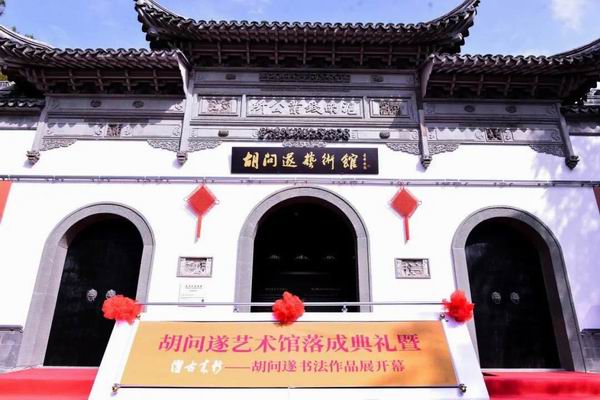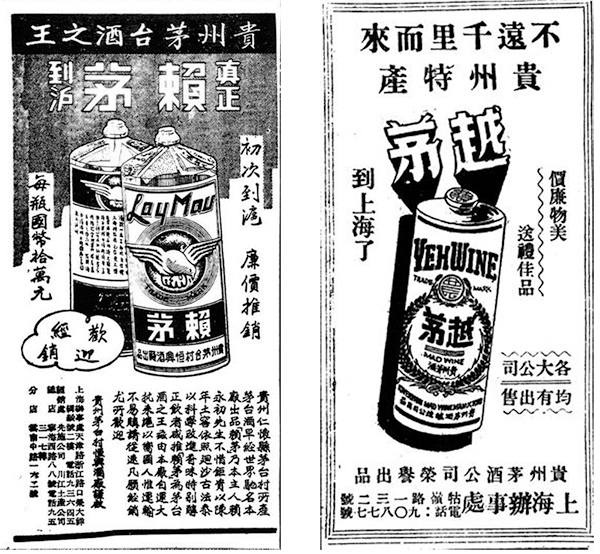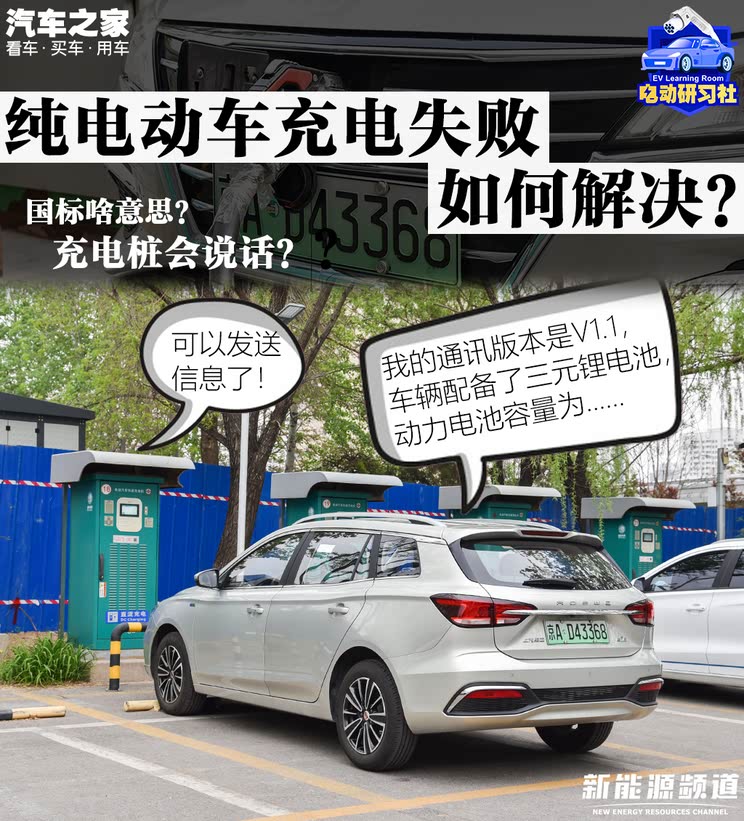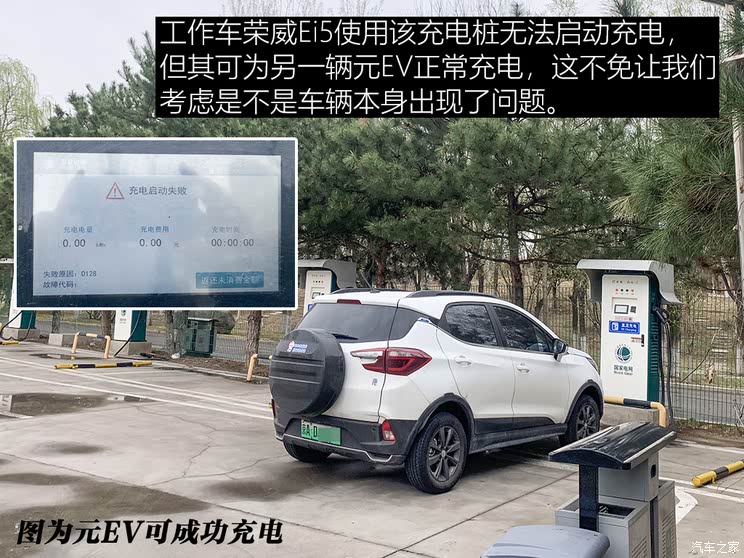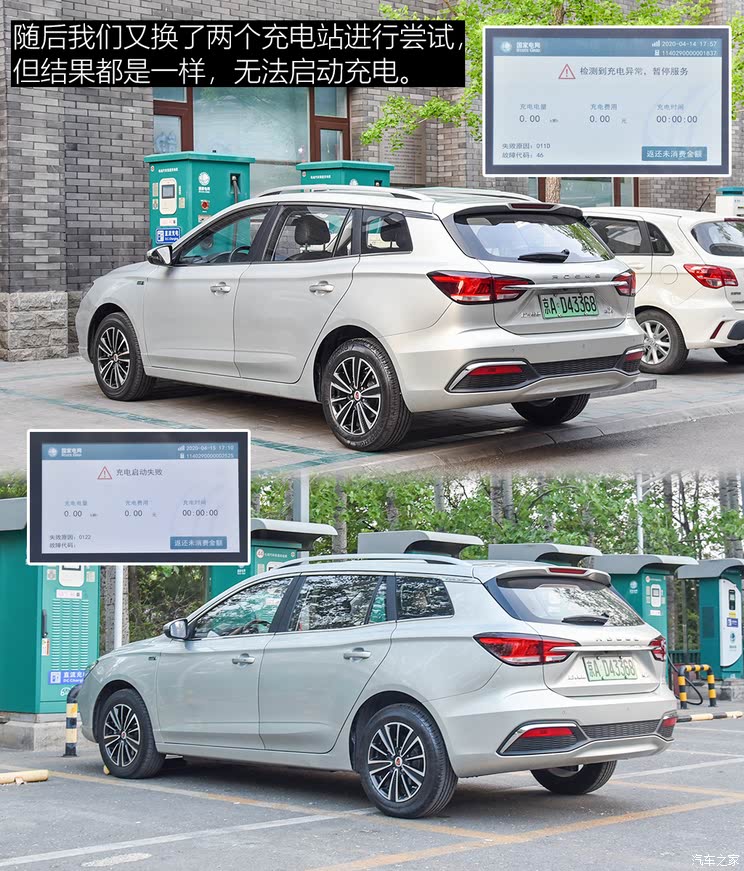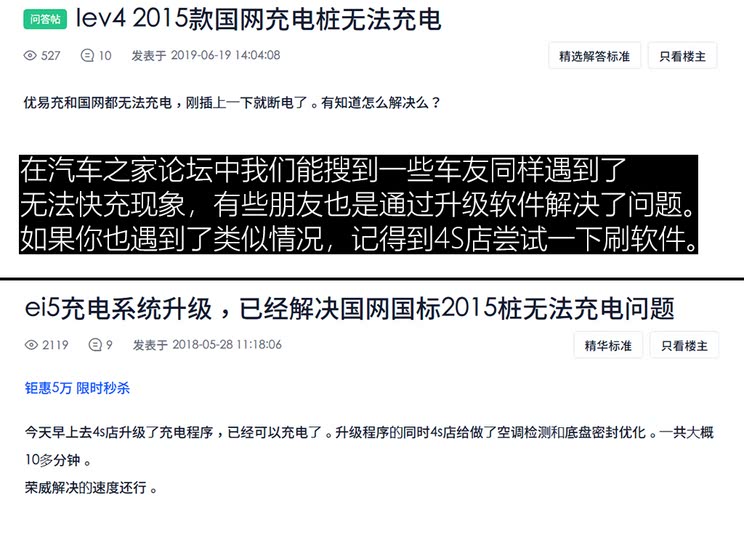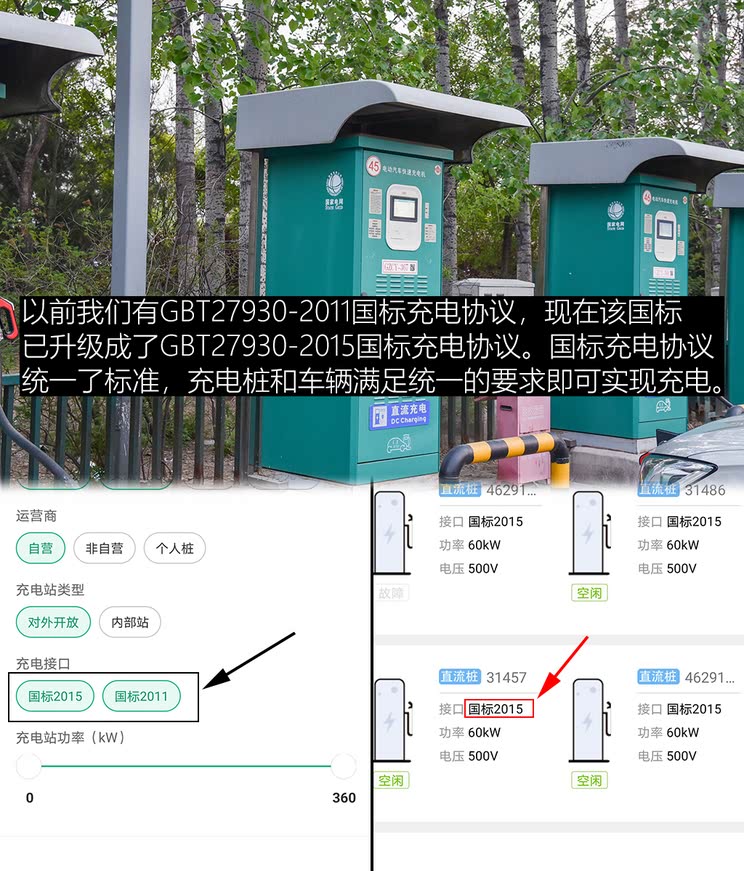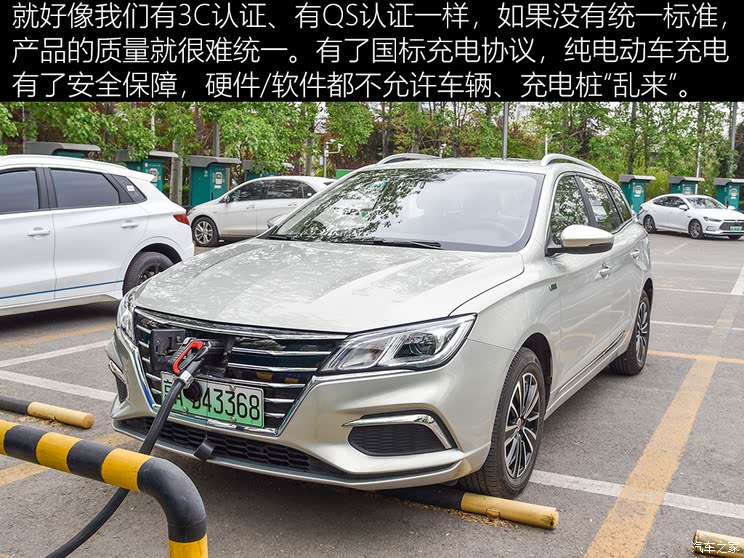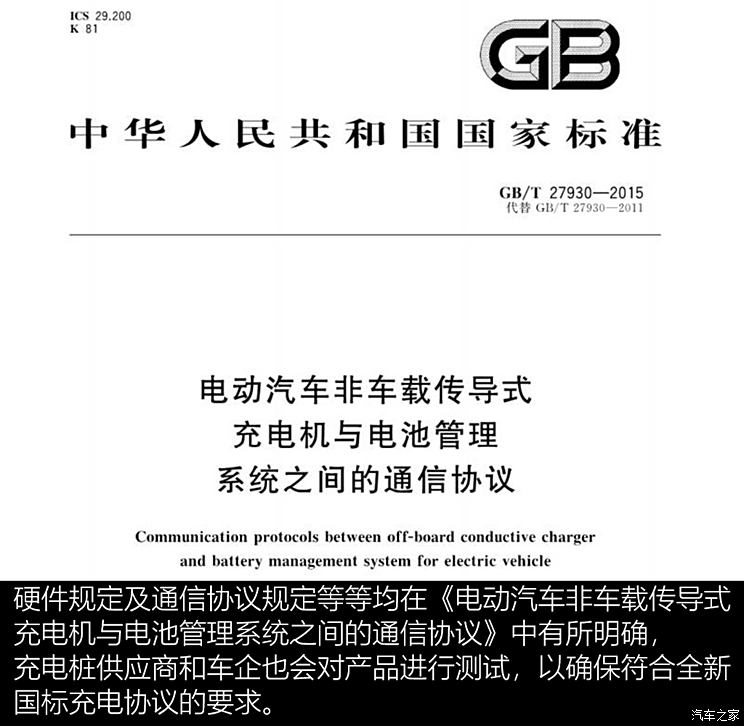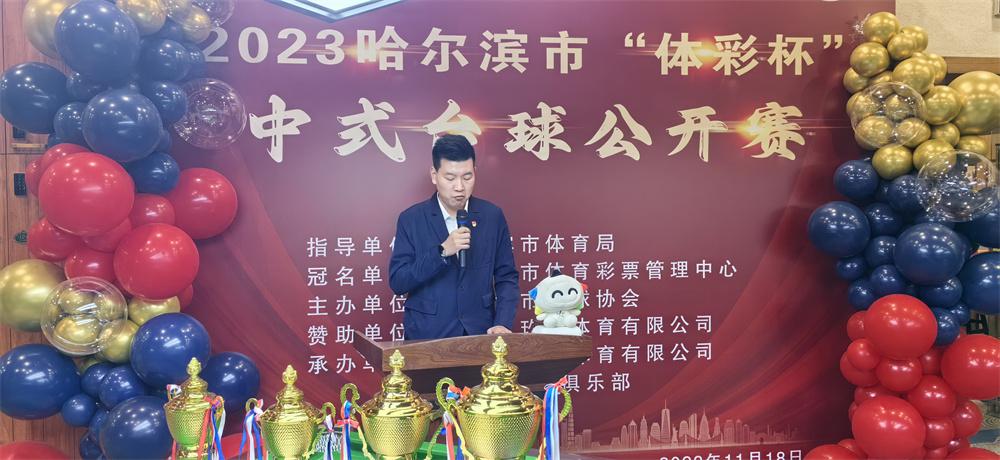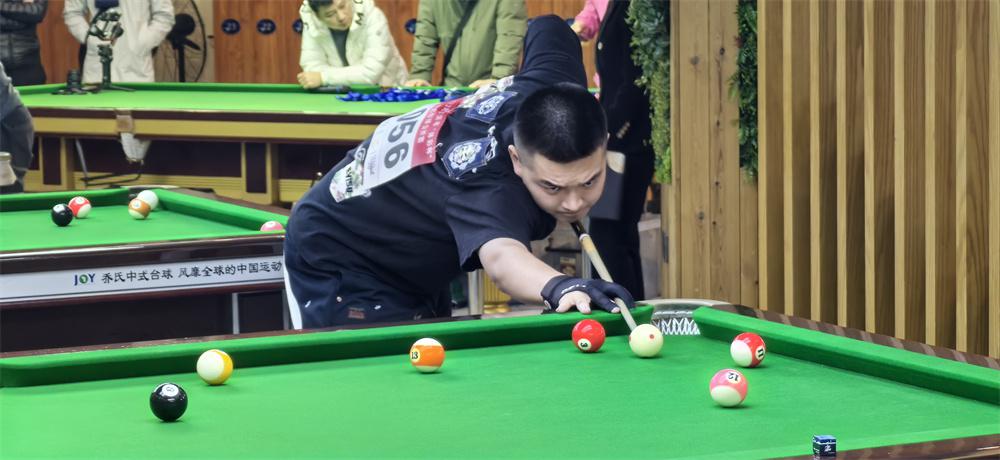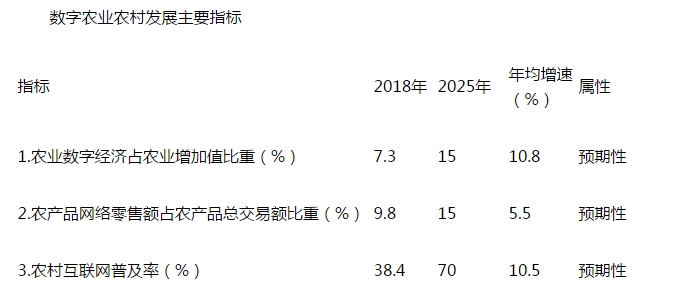Notice of the Office of the Central Cyber Security and Informatization Committee of the Ministry of Agriculture and Rural Affairs on Printing and Distributing the Digital Agriculture and Rural Development Plan (2019-2025)
Nongguifa "2019" No.33
All provinces, autonomous regions, municipalities directly under the central government and cities under separate state planning (agriculture and animal husbandry) departments (commissions and bureaus), network offices, agricultural and rural bureaus of Xinjiang Production and Construction Corps, and network offices:
In order to implement the Opinions of the Central Committee of the Communist Party of China and the State Council on Implementing the Rural Revitalization Strategy, the Rural Revitalization Strategic Plan (2018-2022) and the Outline of the Digital Rural Development Strategy, and accelerate the precision of agricultural and rural production and management, intelligent management services, and digital rural governance, the Ministry of Agriculture and Rural Affairs and the Office of the Central Cyber Security and Informatization Committee have formulated the Digital Agricultural and Rural Development Plan (2019-2025), which is now issued.
Office of Central Network Security and Informatization Committee of Agriculture and Rural Affairs Department
December 25, 2019
Digital Agriculture Rural Development Plan (2019-2025)
Catalogue
I. Development situation 5
(A) development effectiveness 5
(B) Development Opportunities and Challenges 7
Second, the general idea 8
(1) Guiding ideology 8
(II) Basic Principle 9
(III) Development Goal 10
Iii. Building a Basic Data Resource System 10
(A) the construction of agricultural natural resources big data 10
(2) Building Big Data of Important Agricultural Germplasm Resources 11
(3) Building rural collective assets big data 11
(D) Building rural homestead big data 11
(V) Improve the big data of farmers and new agricultural business entities 12
Fourth, accelerate the digital transformation of production and operation 12
(A) planting information 12
(B) intelligent animal husbandry 13
(C) the wisdom of fisheries 13
(D) Digitalization of seed industry 14
(V) Diversification of new formats 14
(six) the whole process of quality and safety control 15
V. Promoting the digital transformation of management services 15
(A) to establish and improve the agricultural and rural management decision support technology system 15
(2) Improve the monitoring and early warning system for the whole industrial chain of important agricultural products.
(C) the construction of digital agriculture and rural service system 16
(D) the establishment of rural human settlements in ambient intelligence monitoring system 17
(E) Building rural digital governance system 17
Vi. Strengthening innovation in key technologies and equipment 18
(A) to strengthen the key common technology research 18
(B) Strengthening the advanced layout of strategic cutting-edge technologies 18
(3) Strengthening the application and demonstration of technology integration 19
(D) to speed up the development and application of agricultural artificial intelligence 19
Vii. Strengthening the construction of major engineering facilities 20
(A) National Agricultural and Rural Big Data Center Construction Project 20
(II) Construction Project of Integrated Observation System of Sky and Earth in Agriculture and Rural Areas 21
(C) National Digital Agriculture and Rural Innovation Project 22
VIII. Safeguards 24
(A) to strengthen organizational leadership 24
(B) increase policy support 25
(3) Strengthening the management of data acquisition 25
(D) Strengthening the support of scientific and technological talents 26
I. Development situation
(A) Development effectiveness
Since the 18th National Congress of the Communist Party of China, the CPC Central Committee and the State Council have attached great importance to the construction of digital agriculture and rural areas, and made a series of major deployment arrangements, such as implementing big data strategy and digital rural strategy, and vigorously promoting "internet plus" modern agriculture. All regions and departments have conscientiously implemented and vigorously promoted the application of digital technology in agriculture and rural areas, and achieved remarkable results.
Digital technology and agricultural and rural areas are accelerating integration. The digitalization of industry has been rapidly promoted, digital technologies such as intelligent perception, intelligent analysis and intelligent control have been accelerated to penetrate into agriculture and rural areas, the construction of big data in agriculture and rural areas has been deepened, the market monitoring and early warning system has been gradually improved, platforms such as traceability of agricultural product quality and safety, basic data of agricultural and veterinary drugs, market information of key agricultural products and direct reporting of new agricultural business entities have been built and used, the construction of single-variety big data has been fully launched, and the construction of big data in seed industry and agricultural technology services has achieved initial results.
New industries and new formats are emerging. E-commerce of agricultural products is booming. In 2018, the online retail sales of agricultural products nationwide reached 554.2 billion yuan, accounting for 9.8% of the total transaction volume of agricultural products. Big data service products based on agricultural products e-commerce and agricultural remote sensing have been continuously enriched, and digital industrialization has been innovated and developed. New formats and models such as customized agriculture, creative agriculture, adopted agriculture and cloud farm are in the ascendant, the rural sharing economy is gradually emerging, and the socialized agricultural service of "internet plus" is accelerated. In 2018, the proportion of agricultural digital economy in agricultural added value reached 7.3%.
The ability of scientific and technological innovation has been continuously improved. The National Engineering Technology Research Center in the field of digital agriculture, the agricultural information technology and agricultural remote sensing discipline group, and the National Smart Agriculture Innovation Alliance have been built one after another, and the construction of smart agriculture laboratories and digital agriculture innovation centers has been accelerated. Agricultural Internet of Things, data science, artificial intelligence and other related majors are generally established in colleges and universities. The construction of digital agriculture standard system has been accelerated, and a number of national and industrial standards such as agricultural Internet of Things application services, perceptual data description and basic specifications of sensing equipment have been introduced one after another. With independent intellectual property rights, sensors, unmanned aerial vehicles, agricultural robots and other technologies are developed and applied, and the agricultural information acquisition technology integrating satellite remote sensing, aerial remote sensing and ground Internet of Things is becoming more and more mature. The agricultural machinery operation monitoring technology based on Beidou automatic navigation has made an important breakthrough and is widely used in wheat cross-regional harvesting.
Facilities and equipment conditions have improved significantly. The proportion of optical fiber access and 4G access in administrative villages in China is over 98%, and the goal of the national "Thirteenth Five-Year Plan" is achieved ahead of schedule, and the proportion of broadband access in poor villages is over 94%. There are 29.2 computers and 246.1 mobile phones for every 100 households in rural areas. The application system of agricultural remote sensing, navigation and communication satellites was initially established, and the high-resolution remote sensing satellite "Gaofen-6" suitable for agricultural observation was successfully launched. The monitoring facilities of the Internet of Things have been accelerated, and the cumulative area applied to subsoiling and soil preparation of agricultural machinery has exceeded 150 million mu.
The policy support system was initially established. Documents such as the "Thirteenth Five-Year Plan" for the development of agricultural and rural informatization, the "internet plus" three-year action plan for modern agriculture, and the implementation opinions on the development of big data in agricultural and rural areas were released, and a policy system for the construction of digital agriculture and rural areas was initially established. The implementation of the project of information entering villages and households has covered 26 provinces, and one third of the administrative villages in the country have established the Yi Nong Information Society. In-depth promotion of digital agriculture construction pilot, agricultural and rural big data pilot, and national Internet of Things application demonstration has created a number of typical models that can be replicated and promoted. A series of supporting policies have been issued in various localities in light of the actual situation, actively promoting the intelligentization of agricultural production, the new mode of online marketing and information management services.
(B) Development opportunities and challenges
The digitalization of agriculture and rural areas is the digitalization of agricultural elements such as organisms and environment, agricultural processes such as production and management, and rural governance. It is a profound revolution. Looking forward to the future, digital agriculture and rural development will usher in a rare opportunity. From an international perspective, a new round of global scientific and technological revolution and industrial transformation is in the ascendant, and the application of new generation information technologies such as Internet of Things, Zhilian.com, big data and cloud computing has been accelerated, which has profoundly changed the production and lifestyle, triggered profound changes in the economic structure and industrial form, and formed a general consensus on developing the digital economy. Big data has become a basic strategic resource, and a new generation of artificial intelligence has become an innovation engine. The major developed countries in the world regard digital agriculture as their strategic focus and priority development direction, and have successively introduced strategies such as "Big Data Research and Development Plan", "Agricultural Technology Strategy" and "Agricultural Development 4.0 Framework" to build a new round of industrial revolution and new advantages. Domestically, the CPC Central Committee and the State Council attached great importance to network security and informatization, vigorously promoted the construction of digital China, implemented the strategy of digital countryside, and accelerated the process of 5G network construction, which provided a strong policy guarantee for the development of digital agriculture and countryside. Informatization has developed simultaneously with new industrialization, urbanization and modernization of agriculture and rural areas, the digital gap between urban and rural areas has been bridged rapidly, and the inclusive effect of digital technology has been effectively released, which has provided a strong impetus for the development of digital agriculture and rural areas. China’s agriculture has entered a new stage of high-quality development, the rural revitalization strategy has been implemented in depth, and agricultural and rural areas have accelerated the transformation of development mode, optimized development structure and changed growth momentum.It provides a broad space for the digitalization of agricultural and rural production, operation and management services.
However, it should also be noted that the overall development of digital agriculture and rural areas lags behind and faces many challenges. The development foundation is weak, the data resources are scattered, the ability to obtain data from the integration of space and land is weak, and the coverage rate is low. The construction of big data for the whole industrial chain of important agricultural products and the basic data resource system for agriculture and rural areas has just started. Insufficient innovation ability, lagging research and development of key core technologies, lack of special sensors for agriculture, and poor adaptability of agricultural robots and intelligent agricultural machinery and equipment. Compared with medicine and other fields, the application of digital research in agriculture and rural areas is obviously lagging behind. The level of rural digital governance is low, and there is still a big gap compared with cities. Digital industrialization lags behind, data integration and sharing are insufficient, and development and utilization are insufficient. The proportion of digital economy in agriculture is far lower than that in industry and service industry, which has become a prominent shortcoming in the construction of digital China.
According to comprehensive judgment, the current and the "14th Five-Year Plan" period are important strategic opportunities to promote the digitalization of agriculture and rural areas. We must conform to the trend of the times, seize development opportunities, speed up the popularization and application of digital technology, vigorously enhance digital productivity, seize the commanding heights of digital agriculture and rural areas, promote the high-quality development of agriculture and the comprehensive revitalization of rural areas, and let farmers share the development dividend of digital economy.
Second, the general idea
(A) the guiding ideology
Guided by the Supreme Leader’s Socialism with Chinese characteristics Thought in the New Era, we will fully implement the spirit of the 19th National Congress of the Communist Party of China and the 2nd, 3rd and 4th Plenary Sessions of the 19th National Congress, make efforts to build a basic data resource system in accordance with the overall deployment of implementing digital China strategy, rural revitalization strategy and digital rural strategy, with industrial digitalization and digital industrialization as the main development line, digital technology and deep integration of agriculture and rural economy as the main direction, and data as the key production factor. Strengthen the construction of digital production capacity, speed up the digital transformation of agricultural and rural production, operation and management services, strengthen the innovation of key technologies and equipment and the construction of major engineering facilities, promote the interconnection and open sharing of government information systems and public data, comprehensively improve the level of intelligent production, networked operation, efficient management and convenient service in agricultural and rural areas, lead and drive agricultural and rural modernization with digitalization, and provide strong support for realizing comprehensive rural revitalization.
(2) Basic principles
-make overall plans and advance in an orderly manner. Facing the main battlefield of modern agricultural construction, we should grasp the new development trend of digital economy and information technology, strengthen the top-level design, adjust measures to local conditions, make key breakthroughs and advance step by step, and explore the development model of digital agriculture and rural areas with China characteristics.
-data-driven, inclusive sharing. Taking resource integration and data sharing as ways, we will promote data fusion, mining and application, build a sharing platform, realize agricultural and rural data interconnection, resource co-construction and sharing, and business collaboration, and give birth to new digital agriculture and rural industries, new models and new formats, so that farmers can have more sense of gain and happiness.
-innovation-oriented and application-oriented. Facing the major needs of agricultural and rural development, we will focus on the "stuck neck" technology of digital agriculture and rural areas, vigorously promote independent innovation and collaborative research, strengthen pilot demonstration and integrated application, and improve the level of agricultural production and management intelligence and rural governance modernization.
-multi-party participation and joint efforts. We will improve the coordinated promotion mechanism of government guidance, market leadership and social participation, give play to the core driving role of Internet enterprises and agricultural information enterprises, encourage farmers and new agricultural business entities to participate extensively, and form a co-construction pattern in which multiple entities participate.
(3) Development goals
By 2025, important progress will be made in the construction of digital agriculture and rural areas, which will strongly support the implementation of the digital rural strategy. The data collection system of agriculture and rural areas has been established and improved, and the integrated observation network of the sky and the ground, the basic data resource system of agriculture and rural areas and the cloud platform of agriculture and rural areas have been basically completed. The integration of digital technology with agricultural industrial system, production system and management system has been accelerated, the digital transformation of agricultural production and management has made remarkable progress, the digital level of management services has been significantly improved, the proportion of agricultural digital economy has been greatly improved, and the rural digital governance system has been improved day by day.
Third, build a basic data resource system
(A) the construction of agricultural natural resources big data
Using data such as registration of rural land contractual management right, demarcation of permanent basic farmland, storage of high-standard farmland on the map, investigation and monitoring of cultivated land quality, delineation of grain production functional areas and important agricultural products production protection areas, and filing of protected agricultural land, we will build a database of basic information on cultivated land and form big data such as ownership, area, spatial distribution, quality and planting type of basic plots. Conduct surveys on the spatial distribution of fishery waters, fishing boats, fishing ports and fishery navigation marks, and form big data on fishery water resources covering inland waters and important sea areas and fishing grounds around the world.
(2) Building Big Data of Important Agricultural Germplasm Resources
Relying on the unified national seed industry big data platform, we will build a national database of important agricultural germplasm resources, draw a national distribution map of agricultural germplasm resources, and promote digital dynamic monitoring and information supervision and management of crop, livestock, poultry, aquatic products, microorganisms and other germplasm resources. Carry out accurate identification and evaluation of plant and animal phenotypes and genotypes, deeply explore excellent germplasm and genes, and build a molecular fingerprint library to provide big data support for variety breeding, industrial development and industry supervision.
(3) Building big data of rural collective assets
The establishment of collective assets registration, storage, use, disposal and other management electronic ledger, promote the digitalization of rural collective assets information. Collect data on assets verification, property right system reform, registration and coding of collective economic organizations, financial management of collective assets, and build big data on rural collective assets nationwide. Promote the digitalization of national agricultural reclamation assets management and strengthen the supervision over the possession, use, income and disposal of state-owned agricultural assets.
(D) Building big data of rural residential land
Based on the third national land survey, satellite remote sensing and other data information, combined with the registration and certification of the right to use the homestead integrated with real estate, the investigation of the utilization status of rural homesteads and rural houses, the national rural homestead database is constructed, covering the information of homestead units, spatial distribution, area, ownership, restrictions and utilization status. We will promote the informatization construction of homestead distribution, approval, circulation, utilization, supervision and statistical investigation, and improve and update basic data in a timely manner.
(5) Improve the big data of farmers and new agricultural business entities.
Based on the rural land contractual management right confirmation registration database, combined with agricultural subsidies, input supervision, new agricultural business entity information direct reporting, family farm directory and other systems, in accordance with the way of "unified deployment at ministerial level, agricultural business entities reporting at one time, multi-level and multi-party sharing and utilization", the basic data of business entity identity, employment, production management, subsidy issuance, supervision and inspection, input use, training and marketing and other information will be improved and gradually realized.
Fourth, accelerate the digital transformation of production and operation
(A) planting information
Accelerate the development of digital agriculture, dynamically monitor the planting type, planting area, soil moisture, crop growth and disaster situation of important crops by means of satellite remote sensing, aerial remote sensing and ground Internet of Things, release early warning information in time, and improve the informationization level of planting production management. Accelerate the construction of agricultural pest monitoring network and digital plant protection defense system to realize intelligent identification and digital prevention and control of major pests and diseases. Build a digital garden, promote the integrated application of intelligent perception, intelligent analysis and intelligent control technology and equipment in field planting and facility gardening, build an environmental control, precise application of water, fertilizer and medicine, precise planting, intelligent operation and scheduling monitoring of agricultural machinery, and intelligent grading and decision-making system, develop intelligent "workshop agriculture" and promote intelligent management of planting production and operation.
(B) intelligent animal husbandry
Build a digital breeding pasture, promote the intelligent transformation of equipment such as ventilation and temperature control, air filtration and environmental awareness in livestock and poultry houses, integrate and apply digital equipment such as electronic identification, accurate feeding and livestock manure treatment, accurately monitor the number of inputs and outputs of livestock and poultry breeding, and realize the monitoring and accurate feeding of livestock and poultry breeding in ambient intelligence. Accelerate the application of intelligent monitoring technology of individual signs, and strengthen the accurate diagnosis, early warning, prevention and control of animal diseases. Promote the direct reporting of data from farms (slaughter, feed, veterinary drug enterprises, etc.), and build a dynamic database of "one yard for one farm (enterprise) and one standard for one animal (poultry)" to realize the interconnection of information in all aspects of animal production, circulation and slaughter. Accelerate the construction of a digital dairy cloud platform.
(C) the wisdom of fisheries
Promote smart aquaculture, build an aquaculture production and management system based on the Internet of Things, promote the popularization and application of digital technologies and equipment such as real-time monitoring of water environment, accurate feeding of bait, disease monitoring and early warning, control of circulating water equipment, automatic lifting control of cages, and drone cruising, and develop digital fishing grounds. Focusing on the national marine pasture demonstration area, we will promote the construction of a visual, intelligent and information system for marine pastures. Vigorously promote the application of Beidou navigation technology and Tiantong communication satellite in marine fishing, speed up the construction of digital communication base stations, and upgrade and transform marine terminals and digital fishing equipment such as satellite communication, positioning navigation and anti-collision of fishing boats. Strengthen the basic research on digital technology of offshore fishing, improve the information collection and analysis ability of offshore fishing resources development and utilization, and promote the application of video surveillance of offshore fishing boats. Develop the networking of fishing vessels, promote the intelligent navigation, operation and control of fishing vessels, and build a comprehensive fishing port management system covering fishery law enforcement, fishing vessel entry and exit reports, electronic fishing logs, traceability of catches, dynamic monitoring of fishing vessels and video monitoring of fishing ports.
(D) Digitization of seed industry
Accelerate the research and development and in-depth application of big data in seed industry, establish information capture, multi-dimensional analysis and intelligent evaluation models, carry out intelligent data mining and analysis covering the whole chain of seed industry such as scientific research, production and management, and build an intelligent service platform. According to the needs of commercial animal and plant breeding, the technology and equipment for obtaining phenotypic information of animals and plants are developed and popularized, and the Qualcomm quantity of massive phenotypic character data is obtained. Strengthen the development and identification of resources, establish and improve the gene database and phenotype database of variety resources, and provide support for deep gene mining. Combined with the digital intelligent breeding auxiliary platform, data such as genomics, proteomics and phenotypes are mined, and an optimized breeding scheme for directional target traits is formulated, so as to accelerate the transformation from "empirical breeding" to "precise breeding" and gradually realize customized design breeding. Make overall use of production and business license, production filing and sky-ground integrated monitoring means, accelerate the application of digital technology in seed production base, breeding livestock and poultry farm, aquatic seed farm and trading market supervision, and improve the intelligent supervision level of seed industry. Open up the horizontal connection of databases, provide "one-stop" comprehensive query and business handling of seed industry data, technology, services, policies and laws, optimize the function of mobile APP of national seed industry big data platform, and promote the innovation of seed industry service model.
(E) Diversification of new formats
Encourage the development of new Internet-based formats such as crowdfunding agriculture and customized agriculture, and innovate and develop network business models such as shared agriculture and cloud farms. Deepen the comprehensive demonstration of e-commerce in rural areas, implement the "internet plus" project of agricultural products leaving the village and entering the city, promote artificial intelligence and big data to empower rural physical stores, and comprehensively open up online and offline marketing channels for agricultural products. Encourage the development of intelligent leisure agriculture platform, improve the digital map of leisure agriculture, guide rural tourism demonstration counties and beautiful leisure villages (fishing villages and farms) to carry out online business, and promote new business models such as public participatory evaluation, digital creative roaming and immersive experience. Promote cross-industry and cross-domain data integration and service expansion, deeply develop and utilize data resources such as agricultural production, market transactions and agricultural inputs, promote business models such as credit, insurance and supply chain finance based on big data, and innovate service methods such as supply and demand analysis, technology promotion and product marketing.
(VI) Whole process of quality and safety control
Promote the standardization of agricultural products production, formulate key standards such as classification and grading of agricultural products, and promote the construction of agricultural products information standard system throughout the industrial chain. Promote the identification of agricultural products, and guide the production and operation entities to add quality certification, product name and place of origin, trademark and brand identification to the agricultural products listed for sale. Promote the traceability of agricultural products, improve the national agricultural product quality and safety traceability management information platform, establish a certificate system for edible agricultural products, promote the information supervision of agricultural product quality and safety, and establish a linkage mechanism between traceability management, risk early warning and emergency recall. We will generally implement the purchase card system for farmers’ agricultural materials, and strengthen the filing and management of agricultural materials business entities. Collect data on production and operation, supervision and inspection of seeds (seedlings, breeding livestock and poultry), pesticides, fertilizers, feeds, veterinary drugs and other data, and construct a county-based input supervision traceability and data collection mechanism.
V. Promoting the digital transformation of management services
(A) establish and improve the agricultural and rural management decision support technology system.
Relying on the basic data resource system of agriculture and rural areas, we will build a big data platform for agriculture and rural areas, use technologies such as big data analysis, mining and visualization, establish relevant knowledge bases and model bases, and develop functional modules such as planting, animal husbandry and veterinary, fishery and fishery administration, supervision and management, science and technology education, resources and environment, international cooperation, government administration, statistical reporting and rural social undertakings, so as to provide market early warning, policy evaluation, supervision and law enforcement, resource management, public opinion analysis and rural governance.
(2) Improve the monitoring and early warning system for the whole industrial chain of important agricultural products.
Strengthen the production and market monitoring of important agricultural products, strengthen the real-time collection and monitoring of production data, guide and encourage Tiantou market and wholesale market to conduct transactions by electronic settlement, promote the real-time collection and interconnection of information on trading links in key markets such as agricultural products wholesale market, supermarkets and e-commerce platforms, and build big data on agricultural products market transactions integrating trading subjects, trading varieties, trading volume and trading price. Construction of global agricultural data survey and analysis system, development and utilization of global agricultural production and trade data. Improve the information collection system for enterprises’ foreign agricultural investment and overseas agricultural products transactions. Strengthen agricultural information monitoring and early warning, expand and improve the daily monitoring of agricultural product market prices, monthly and quarterly analysis of supply and demand situation, balance sheet of supply and demand of important agricultural products, medium and long-term agricultural outlook and other information release and services. Build a monitoring and evaluation system for agricultural and rural modernization and develop an analysis system for agricultural and rural economic operation. Establish an analysis system for the economic operation of agriculture going global, and strengthen the analysis of agricultural utilization of international market resources.
(C) the construction of digital agriculture and rural service system
In-depth implementation of the project of information entering villages and households, optimization and upgrading of online services in rural communities, speeding up the construction of beneficial agricultural information societies, and improving social service management. Improve the agricultural science and technology information service platform and encourage agricultural experts to solve production problems for farmers online. Guide all kinds of social subjects to use information network technology to carry out agricultural productive services in the fields of market information, agricultural materials supply, waste resource utilization, agricultural machinery operation, primary processing of agricultural products, agricultural meteorology "personal tailor", and promote the convenience of public welfare services and operational services. Collect management statistics such as the ownership of agricultural machinery and equipment and important agricultural time operation scheduling data, and strengthen online monitoring and information service of agricultural machinery operation safety. Strengthen the construction and integration of international and domestic agricultural science and technology innovation big data closely related to agricultural science and technology innovation subjects, innovation activities and innovation outputs, and focus on promoting the integrated governance of agricultural science and technology literature big data, agricultural science big data and agricultural scientific research management big data. We will build a number of farmers’ entrepreneurial innovation centers, carry out online display and transaction matching of agricultural products, rural handicrafts, rural tourism, hotel catering, etc., and collect, publish and accurately push rural labor employment and entrepreneurship information in real time.
(D) the establishment of rural human settlements in ambient intelligence monitoring system.
Combined with the improvement of human settlements, we will carry out a thorough investigation and regular monitoring, gather relevant data resources, and establish a database of rural human settlements. Establish a long-term fixed-point observation system for agricultural wastes such as straw, plastic film and livestock manure, and study and promote remote monitoring of rural water sources, large-scale aquaculture plants, rural domestic garbage disposal sites and agricultural waste disposal sites. Encourage the development of new services such as data mining and business analysis of rural human settlements. Guide farmers to actively participate in the network supervision of rural human settlements and jointly safeguard the green living environment.
(E) Building a rural digital governance system
Promote the extension of "internet plus" community to rural areas, improve the informatization level of village-level comprehensive services, and gradually realize the online operation of village-level affairs such as information release, public sentiment collection, deliberation and consultation, and public services. Accelerate the informationization of rural planning management, and promote the storage, online inquiry and real-time tracking of rural planning. Promote online management of rural infrastructure construction and rural public service supply.
Sixth, strengthen the innovation of key technologies and equipment
(A) to strengthen key common technology research.
Aiming at the great demand of agricultural and rural modernization and rural revitalization strategy, we will focus on overcoming the high-quality, high-precision, high-reliability, low-power agricultural production environment and special sensors for animal and plant physiological signs, and fundamentally solve the problem of obtaining Qualcomm information of digital agriculture. Break through new knowledge service technologies such as agricultural big data integration management technology, agricultural information intelligent analysis and decision-making technology, cloud service technology, agricultural knowledge intelligent push and intelligent answer, and build a model of animal and plant growth information acquisition and production regulation mechanism. Break through key equipment technologies such as special sensors for agricultural machinery equipment, agricultural machinery navigation and automatic operation, precision operation and intelligent operation and maintenance management of agricultural machinery, promote integrated research and system demonstration of agricultural machinery agronomy and information technology, and realize information perception, quantitative decision-making, intelligent control, precise investment and personalized service of agricultural machinery operation. Research and development of agricultural products quality and safety rapid analysis and detection and cold chain logistics technology, and promote the application of quality fission detection, agricultural products automatic grading packaging line, intelligent temperature control system and so on.
(2) Strengthen the advanced layout of strategic frontier technologies.
Facing the forefront of science and technology in the world, the country’s major needs and the key areas of digital agriculture and rural development, we will formulate a roadmap for the development of digital agriculture technology, focus on breaking through the basic technologies and general technologies in the digital agriculture and rural areas, and lay out cutting-edge technologies and subversive technologies in advance. Establish a scientific and technological innovation support mechanism that combines long-term task entrustment with dynamic adjustment of phased tasks, strengthen the basic research and development and frontier layout of new technologies such as flexible processing of agricultural products, artificial intelligence, virtual reality and cognitive analysis of big data, and form a series of strategic technical reserves and product reserves of digital agriculture. Build a discipline system and innovation network to support cutting-edge technology research, strengthen Industry-University-Research’s collaborative research, and build a first-Mover advantage to support high-end leadership. Accelerate the breakthrough of core technologies such as large-scale networking of agricultural blockchain and data collaboration between the chain and the offline, strengthen the research on standardization of agricultural blockchain, and promote the innovative application of blockchain technology in agricultural resource monitoring, quality and safety traceability, rural finance and insurance, and transparent supply chain. Actively carry out the application research of 5G technology in the agricultural field, and establish and improve the intelligent agricultural technology system led by 5G.
(C) Strengthen the application and demonstration of technology integration
Focus on key areas, key fields and key varieties, carry out integrated application and demonstration of 3S, intelligent perception, model simulation, intelligent control and other technologies and software and hardware products, and mature and popularize a number of digital agricultural rural technology models and typical examples. Strengthen the integration and service of digital agricultural science and technology innovation data and platform. Strengthen the construction of rural standard system for digital agriculture, and establish standards and specifications such as data standards, data access and services, and software and hardware interfaces.
(D) Accelerate the development and application of agricultural artificial intelligence
Implement the development strategy of agricultural robots, develop a new generation of agricultural robots with strong adaptability, high cost performance and intelligent decision-making, and accelerate the development of standardization and industrialization. We will tackle key core technologies and products, focusing on key technologies such as motion control, position perception and manipulator control. Adapt to different crops and different working environments, and develop universal robots and special robots such as grafting, cutting, transplanting and farmland. For the purpose of efficient automation of animal husbandry production, an automatic auxiliary robot for grazing, feeding, milking, grading, diagnosis and handling is developed. Develop underwater aquaculture robots such as fish tracking, feeding and disease diagnosis. Strengthen the intelligent integration and application demonstration of UAV, focus on overcoming the key technologies of UAV vision, promote the development of single-machine intelligence to cluster intelligence, develop artificial intelligence carrying terminals, and realize real-time functions such as agricultural and forestry plant protection, aerial photography, inspection and production measurement.
Seven, strengthen the construction of major engineering facilities.
(1) National Agricultural and Rural Big Data Center Construction Project
According to the deployment requirements of "Notice of the State Council on Printing and Distributing the Action Plan for Promoting Big Data Development" on the implementation of modern agricultural big data project, we will build a unified and open national agricultural and rural big data center, realize data resource sharing and intelligent early warning analysis, and improve the management service ability and scientific decision-making level in agricultural and rural areas.
1. National agricultural and rural cloud platform. Focusing on enhancing the computing and storage capacity of agricultural and rural big data and agricultural and rural government affairs business systems, we will build a national agricultural and rural cloud covering the agricultural and rural departments of the central government, provinces, cities and counties. Lease and utilize social public cloud infrastructure, build an open cloud of big data in agriculture and rural areas, and gather thematic data in various industries and fields. Integrate existing hardware resources, improve information networks, servers and other facilities and equipment, build a private cloud for big data in agriculture and rural areas, and store core business data. According to the unified standards, data sharing, intersection, calculation and analysis will be carried out to form an agricultural and rural data convergence hub that is cross-departmental, cross-regional and cross-industry.
2. National agricultural and rural big data platform. Integrate data information resources of agricultural and rural sectors, improve data resource management capabilities of industries such as collective asset supervision, agricultural germplasm resources and rural residential sites, and bring together big data of farmers and new production and operation entities, big data of agricultural natural resources, big data of important agricultural germplasm resources, big data of rural collective assets and big data of rural residential sites to build a "one picture" of national agricultural and rural data resources. Build a unified platform for data aggregation, governance, analysis and decision-making, realize data monitoring and early warning, decision-making assistance, display and sharing, and provide data support for agricultural and rural development.
3. National agricultural and rural government information system. According to the overall deployment of the national government information engineering construction, and in accordance with the requirements of "six unifications" (user management, access management, resource management, authorization management, process management and safety audit), we will improve the data support capabilities of global agricultural data investigation and analysis, comprehensive management of fishing ports, comprehensive monitoring and supervision of farmland construction, and collaborative innovation of agricultural and rural scientific research, and build a unified national agricultural and rural government information system. The establishment of government information system construction standard system, security system and operation and maintenance management system, promote the realization of technology integration, data integration, business integration, and provide support for agricultural and rural operation management and scientific decision-making.
(two) the construction project of the integrated observation system of agriculture and rural areas.
According to the "Opinions on Innovating System and Mechanism to Promote the Green Development of Agriculture" issued by the General Offices of the General Office of the Central Committee of the CPC and the State Council, we will build the infrastructure and application system of agricultural and rural observation network integrating sky and land, and realize real-time dynamic observation of agricultural production and rural environment in the whole field, whole process and full coverage.
1. Construction and application project of space-based observation network in agriculture and rural areas. Using the existing and planned remote sensing, navigation, communication satellite resources and various commercial satellite resources of the national space infrastructure, we will give full play to the advantages of red-edge multi-spectrum, wide-spectrum and radar in agricultural and rural observation, focus on building new remote sensing satellites and ground application facilities that meet the needs of agricultural and rural development, and scientifically network with in-orbit remote sensing satellites to form an agricultural remote sensing observation constellation, build an agricultural space-based network, and form an agricultural remote sensing observation capability with routine monitoring and rapid response.
2. Agricultural and rural aviation observation network construction and application projects. Focusing on the needs of high-precision investigation in agriculture and rural areas and emergency monitoring of sudden major agricultural natural disasters, we will focus on building an agricultural and rural aviation monitoring network composed of national centers and provincial sub-centers, purchase advanced UAV platforms such as long-endurance fixed wings and high-mobility multi-rotors, and equip them with special multi-spectral, hyperspectral, lidar, terahertz and other new remote sensors to develop UAV navigation, flight control, operation monitoring and rapid data processing platforms suitable for China’s agricultural production characteristics and different regional needs, so as to enhance regional high-precision observation and rapid emergency response capabilities.
3. Agricultural Internet of Things observation network construction application project. Integrate the use of agricultural remote sensing to monitor the Internet of Things data collection facilities in the ground network counties, agricultural Internet of Things experimental demonstration areas (points), agricultural scientific observation test (monitoring) stations (points), digital agriculture experimental counties and modern agricultural parks, strengthen the real-time observation and data collection capabilities on the ground, improve the analysis accuracy, and form a unified national agricultural and rural ground Internet of Things data survey system.
(C) National Digital Agriculture Rural Innovation Project
According to the decision-making and deployment of the Outline of Digital Rural Development Strategy, we will accelerate the construction of big data in the whole industrial chain of important agricultural products and build a comprehensive service platform for digital agriculture and rural areas.
1. National Digital Agriculture and Rural Innovation Center Construction Project. In order to enhance the independent innovation ability of digital agriculture in rural areas, we will build national innovation centers in the fields of digital agriculture integration, digital planting, digital animal husbandry, digital fishery, digital seed industry and digital agricultural equipment around key common technology research, advanced layout of strategic cutting-edge technologies, application and demonstration of technology integration and research and application of agricultural artificial intelligence; Focusing on promoting the informationization of planting management, intelligence of animal husbandry, intelligence of fishery, digitalization of seed industry and the whole process of quality and safety control, we will build professional sub-centers in the fields of rice, wheat, cotton, potato and other fields, protected gardening, orchards, poultry and eggs, pigs, beef and sheep, dairy cows, freshwater aquaculture, offshore aquaculture, marine pasture, offshore fishing, crop breeding, animal breeding, tropical crops and quality and safety traceability. Improve special facilities and R&D bases, develop innovative platforms for technical research, equipment R&D and system integration, and promote the deep integration of digital technology and agricultural industry.
2. Big data construction projects for the whole industrial chain of important agricultural products. In order to improve the scientific level of production and management decision-making and guide market expectation, relying on institutions with strong technical strength and leading and leading position in the industry, we will build wheat, rice, corn, soybeans, cotton, rapeseed, sugar cane, peanuts, natural rubber, apples, oranges, vegetables, potatoes, tea, broilers, eggs, pigs, sheep, beef cattle, cows, fish, shrimps, etc. Establish a service model for data cleaning, mining and analysis in production, processing, storage and transportation, sales, consumption and trade, improve the monitoring and early warning system for market and industrial damage of important agricultural products, and develop and provide service products such as production situation, market price and balance between supply and demand.
3. Digital agriculture pilot construction project. In order to strengthen the construction of data resources in important areas and key links in the county, build a comprehensive information service system, and comprehensively promote the comprehensive application and integrated demonstration of digital technology, relying on county-level agricultural and rural departments or their subordinate enterprises and institutions, select counties and cities where the grain production function zone, important agricultural product production protection zone, characteristic agricultural product advantage zone, national agricultural green development pioneer zone, national modern agricultural demonstration zone and national modern agricultural industrial park are located. We will build a number of digital agriculture pilot projects, promote digital transformation in the fields of planting, animal husbandry, fishery and quality and safety supervision, and explore a replicable and scalable construction model.
VIII. Safeguard measures
(A) to strengthen organizational leadership
Under the framework of the national overall planning and coordination mechanism for the construction and development of digital villages, the Ministry of Agriculture and Rural Affairs and the Central Network Information Office, together with relevant departments, make overall plans to promote the construction of digital agriculture and rural areas, study major policies, major issues and key work arrangements, and follow up and supervise the implementation of planning tasks. Establish planning implementation and work promotion mechanisms, and strengthen policy convergence and work coordination. All localities should combine the actual development, formulate planning and implementation plans, refine policies and measures, and make overall plans to promote the construction of digital agriculture and rural areas in the region. Agricultural and rural authorities at all levels should integrate the digital concept into the whole process of agricultural and rural work, speed up the digital transformation of workflow, and build a management system for digital agricultural and rural development. Relying on the Advisory Committee of Experts on Agricultural and Rural Informatization, we will strengthen the guidance of digital agricultural and rural construction and provide intellectual support for scientific decision-making and project implementation. Establish a monitoring and evaluation mechanism for the development level of agricultural and rural informatization and carry out regular monitoring.
(2) Increase policy support.
All localities should increase investment in the development of digital agriculture and rural areas, explore ways such as government purchasing services, cooperation between government and social capital, and discount loans, attract social forces to participate extensively, and guide industrial and commercial capital and financial capital to invest in the construction of digital agriculture and rural areas. Give priority to land for major infrastructure construction projects in digital agriculture and rural areas, and enjoy subsidies for qualified digital agricultural special equipment and agricultural Internet of Things equipment in accordance with relevant regulations. Promote the "streamline administration, delegate power, strengthen regulation and improve services" reform in the agricultural and rural areas, optimize the management service process, and create a good development environment. Actively support and cultivate the main body of digital industrialization in agriculture and rural areas.
(C) Strengthen data collection management
Consolidate and upgrade the existing monitoring and statistical channels, improve the infrastructure of original data collection, transmission, summary, management and application, strengthen the capacity building of data mining, analysis and application, and establish and improve the agricultural and rural data collection system. Using ground observation, sensors, remote sensing and geographic information technology, real-time collection of agricultural production environment, production facilities and animal and plant ontology perception data. Carry out Internet data mining, obtain enterprise and social data by means of government purchasing services, and promote the integration of offline data and online data. On the premise of complying with relevant laws and regulations, actively integrate all kinds of agricultural and rural data resources, and rely on the agricultural and rural big data platform to realize unified data management and online sharing. We will study and introduce open policies and management norms for data sharing, formulate a open directory project list for sharing big data resources in agriculture and rural areas, and gradually promote data sharing among units, agriculture-related departments and central and local governments. In addition to the classified data stipulated by the state, we will accelerate the collaborative management and integration of agricultural and rural data resources and gradually open them to the public.
(D) Strengthen the support of scientific and technological talents
Establish a digital agricultural rural science and technology innovation system, take digital agricultural rural science and technology research as the support focus of major national special projects and key research and development plans, and establish a modern agricultural industrial technology system digital agricultural rural science and technology innovation team. Cooperate with scientific research institutions, universities, enterprises and other parties to cultivate a number of leading talents, engineers and high-level management teams in digital agriculture and rural areas. Strengthen the training of digital agriculture and rural business, carry out the activities of talents going to the countryside in the field of digital agriculture and rural areas, popularize the relevant knowledge of digital agriculture and rural areas, and improve the application and management level of digital technology for "three rural" cadres, new business entities and high-quality farmers. Establish a scientific talent evaluation and incentive system to give full play to the enthusiasm and initiative of talents.
This plan is formulated in order to implement the Opinions of the Central Committee of the Communist Party of China and the State Council on Implementing the Rural Revitalization Strategy, the Rural Revitalization Strategic Plan (2018-2022) and the Outline of the Digital Rural Development Strategy, and accelerate the precision of agricultural and rural production and management, intelligent management services and digitalization of rural governance.
Attachment: Notice of the Office of the Central Cyber Security and Informatization Committee of the Ministry of Agriculture and Rural Affairs on Printing and Distributing the Digital Agriculture and Rural Development Plan (2019-2025)

